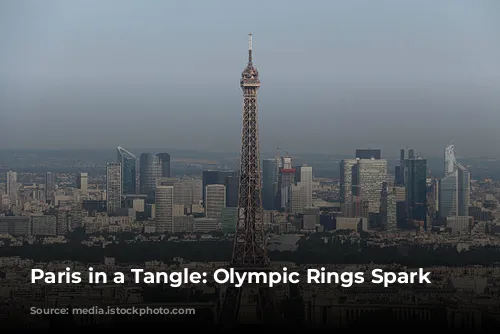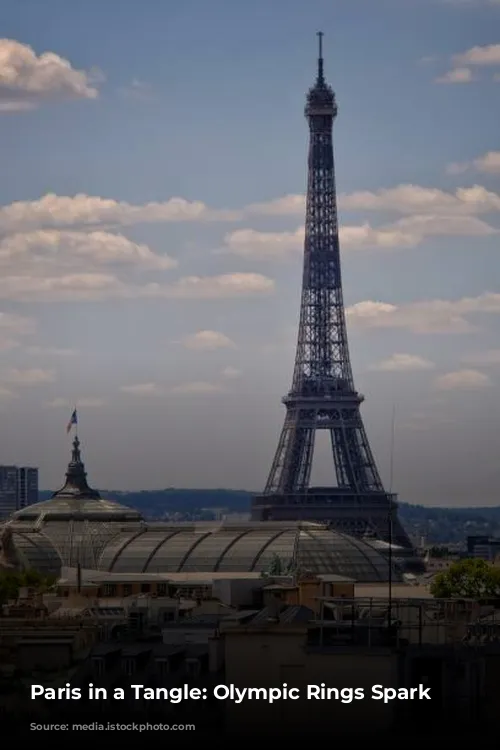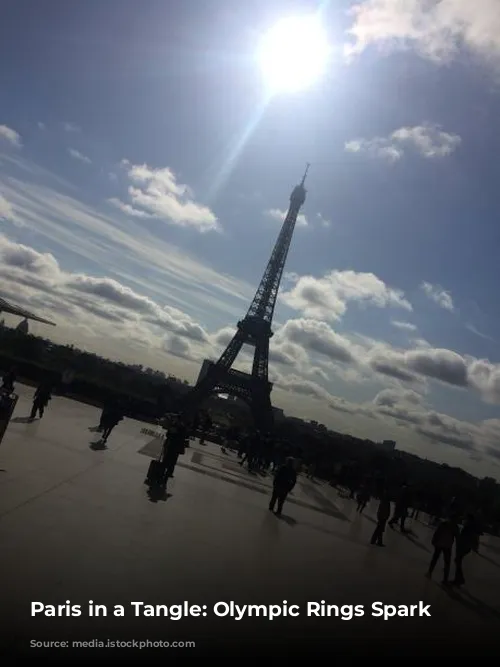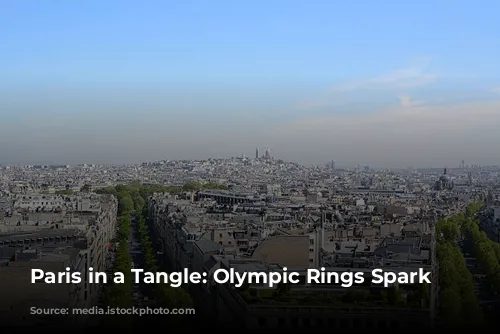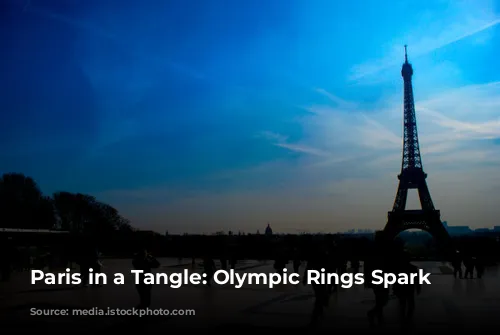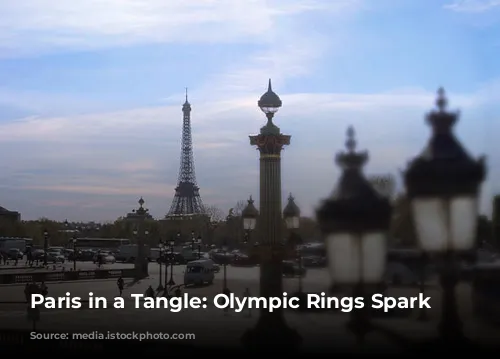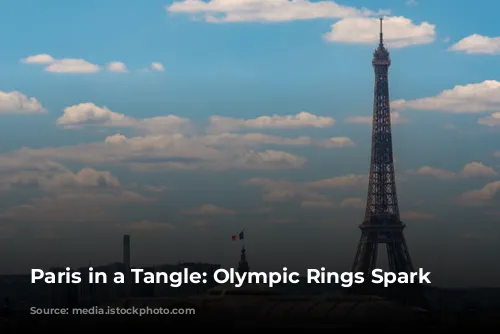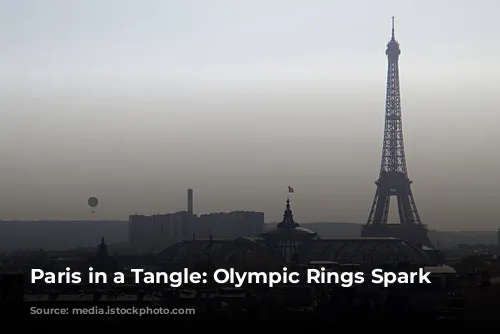(This section provides an introduction to the controversy surrounding the Olympic rings on the Eiffel Tower.)
The 2024 Olympic Games are in full swing in Paris, but the celebratory atmosphere is overshadowed by a contentious decision by Paris Mayor Anne Hidalgo. Hidalgo has announced plans to permanently display the iconic Olympic rings on the Eiffel Tower, a proposal met with fierce resistance from heritage preservationists, the family of the tower’s architect, and even other politicians. The move has triggered a heated debate about the future of this historic landmark and the delicate balance between celebrating sporting events and safeguarding cultural heritage.
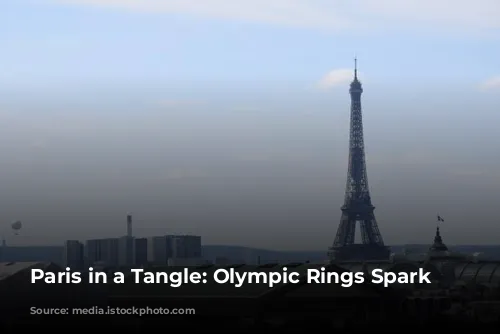
A Legacy in Question
(This section delves into the opposition against Hidalgo’s plan.)
The decision has sparked strong opposition from various quarters. The Association of Descendants of Gustave Eiffel, the architect who designed the tower, has expressed concern over the “lasting” presence of an “external organization’s symbol” on a monument that embodies the spirit of Paris and France. They argue that the Eiffel Tower, initially envisioned as a temporary structure for the 1889 World’s Fair, has since evolved into a symbol of scientific advancement and a UNESCO World Heritage site. The association emphasizes that the tower should not be used as an “advertising antenna.”
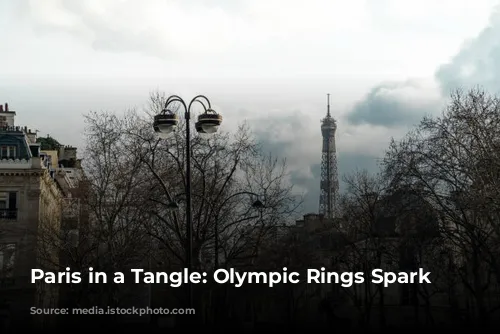
A Clash of Ideologies
(This section explores the different perspectives on the controversial decision.)
Heritage conservation group SOS Paris accuses Hidalgo of using the Eiffel Tower as a vehicle to etch her personal legacy onto the iconic monument. They denounce the move as a “dogma” aimed at reminding the world of Hidalgo’s role in hosting the 2024 Olympics.
The debate has also spilled onto social media, where many users are echoing calls to classify the Eiffel Tower as a historical monument, a status that would afford it the highest level of protection. This sentiment reflects a deep-seated concern for the preservation of France’s cultural heritage.
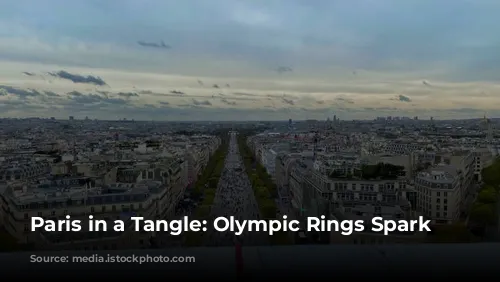
A Plan in Motion, But Not Without Challenges
(This section outlines the practical challenges Hidalgo faces in implementing her plan.)
While Hidalgo remains steadfast in her decision, practical challenges remain. The current Olympic rings are deemed too heavy for permanent installation and will need to be replaced with lighter replicas. Additionally, the city must devise a method to conceal the rings when necessary, to comply with the Olympics’ political neutrality rules. This raises questions about the feasibility and aesthetics of the proposed plan.
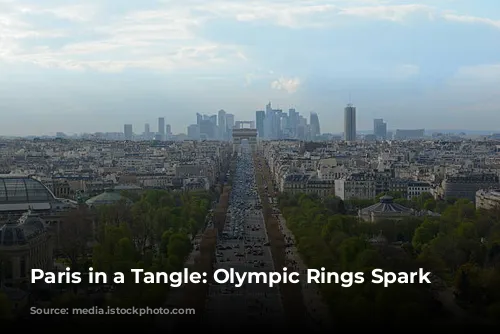
A Public Uproar
(This section showcases the public sentiment towards the plan.)
The public outcry against Hidalgo’s plan is evident in a Change.org petition that has garnered thousands of signatures. The petition emphasizes the need to return the Eiffel Tower to its “natural state” after the Games.
Even Culture Minister Rachida Dati, who unsuccessfully competed against Hidalgo for the mayoral position in 2020, has publicly expressed her concerns. Dati stresses the need for a thorough consultation process and adherence to heritage protection procedures before any final decisions are made.
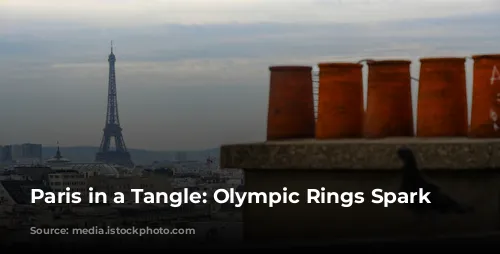
A Monument’s Fate Uncertain
(This section provides a concluding summary of the controversy.)
The future of the Eiffel Tower and its iconic silhouette remains uncertain. The decision to keep the Olympic rings permanently on the tower has ignited a passionate debate about the preservation of historical landmarks, the balance between celebrating sporting events, and the role of the city’s mayor in shaping its cultural identity. As the Olympic Games wind down, the controversy surrounding the Eiffel Tower serves as a reminder of the complex issues at play in managing cherished historical monuments in the face of evolving cultural landscape.
